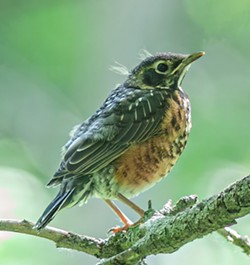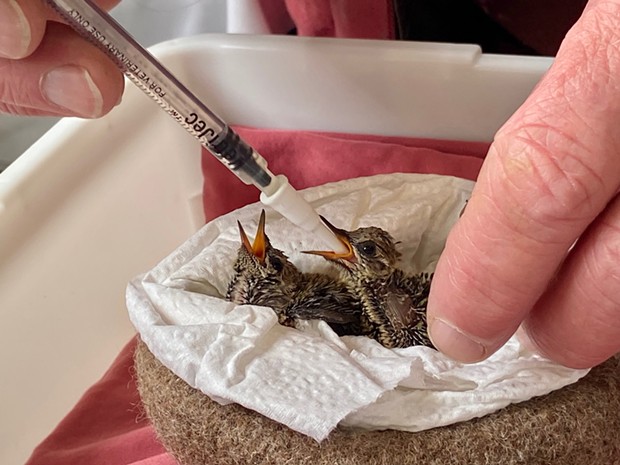
Photo courtesy of Humboldt Wildlife Care Center/Bird Ally X
Young Anna's hummingbirds at the Humboldt Wildlife Care Center/Bird Ally X.
[
{
"name": "Top Stories Video Pair",
"insertPoint": "7",
"component": "17087298",
"parentWrapperClass": "fdn-ads-inline-content-block",
"requiredCountToDisplay": "1"
}
]
You're strolling around the neighborhood one morning when something odd catches your eye. You take a closer look and find a bird in the grass. It looks like a young one: Some of its feathers are stubby, others fluffy, and it hops along as if unsure how to fly. You're worried it might end up in the street. What do you do?
Perhaps you're in your favorite chair absorbed in a good book when THUMP — something hits the window. You investigate and find a robin lying on the deck. Its eyes are closed but it seems to be breathing. Maybe it's just stunned, you think, and will recover on its own. Or should you take action?
Whether you're a hardcore birder or someone for whom birds are a pleasant part of the periphery, at some point you're going to encounter a bird in trouble — often, but not always, a songbird. Recently hatched babies, naked and helpless, sometimes fall from the nest. Older chicks test their wings with varying degrees of success. Human activity contributes to other causes, like window strikes, collisions with cars and cat-related injuries. But illness and bad weather factor in too: I once found a common murre, an ocean-going bird, on I Street at the Arcata Marsh, too weak and dehydrated to go any farther.
I was out of my league, so I called in the experts. Here in Humboldt, that's the Humboldt Wildlife Care Center/Bird Ally X (HWCC/BAX), which has a new location in Manila at 68 Mill St. You can reach staffers at (707) 822-8839. And (spoiler alert) that's what I'm going to recommend for almost every one of the common scenarios below.
Nestlings. A nestling is a true baby bird, perhaps just days old. It's usually featherless, though it may be covered in fluffy down. Its eyes are often closed. Nestlings are too young to survive on their own and, though a parent bird may be nearby, the adult is unable to return the baby to the nest. But you can. Check the trees above and around the fallen chick. If you spot the nest and it's accessible, gently lift the little bird and place it in the nest. Don't worry that your scent will cause the parents to reject the chick — I still remember my mom saying that when my sister and I brought her a baby blue jay in a cigar box — because research has shown that most songbirds have a limited sense of smell.
What if you can't find a nest or it's too difficult to reach? Before you haul out your cigar box, call a licensed wildlife rehabilitator. A trained HWCC/BAX volunteer can help you assess the situation and advise you on a course of action. Director Monte Merrick says a staff member will even come out to the site for what could be a life-or-death call. Staffers "make ourselves available to take on that responsibility," Merrick says.
Fledglings. A fledging is an older chick with enough feathers for short flights, though it may look very different from the adult of its species. Like an awkward teenager, it's ready to test its boundaries, but those first forays into the world sometimes land it a heap of trouble. If you find a fledgling hopping on the ground that appears healthy and is in a safe place — not by a road or a spot where predators might find it — you might reasonably conclude it's best to leave it be. After all, most youngsters, both bird and human, leave the nest at some point in their development. Their parents are still caring for them behind the scenes — keeping an eye on their progress, feeding them, paying their debts and so on. To intervene might disrupt the natural order of things.
On the other hand, today's world, with its burgeoning human population and suburban sprawl into formerly wild areas, is not a particularly hospitable place for a young bird just out of the nest. The chances of a good outcome are, well, not great. The chick could also be ill or have injuries not apparent to the layperson.
If you can't monitor the safety of the fledgling or are just a worrier like me, call HWCC/BAX and describe the situation. You might be asked to take a photo of the bird or bring it in for an evaluation. If it's healthy, they'll ensure it's reunited with its family.
Window strike. It's exactly what it sounds like: A bird crashes into the glass pane, often with considerable force. Sometimes they're killed instantly. Other times, they're stunned or knocked unconscious by the impact. Songbirds are common window-strike victims, as are hawks and even owls. My optometrist told me the story of a sharp-shinned hawk that struck a window hard enough to break the glass, appeared to be dead, then flew off some time later, apparently recovered. A happy ending, right?
Probably not. The majority of window-strike birds that fly away ultimately die from their injuries, Merrick says. "If [you] find a window strike bird, please call," he says, adding that a quiet day in care with anti-inflammatories to combat concussion, internal bleeding and/or swelling is sometimes all such birds need, though mortality is sadly still high.
A few years ago, I visited a house that had a west-facing wall made entirely of plate glass to capture sweeping views of the ocean. But what I found under the window was heartbreaking: At least 50 songbirds — waxwings, thrushes, warblers of all types — lay dead on the deck. The wall of glass was invisible to them.
If your home is prone to window strikes, there are simple and inexpensive measures you can take to make it safer for birds, such as vertical lines, adhesive dots, special curtains and netting. More information is available at allaboutbirds.org/news/how-can-i-keep-birds-from-hitting-my-windows.
Cat encounters. I'm a cat lover. I really am. I love their "meh" attitude toward humans and the way they rub their furry cheek again my hand when I scritch their ears. But free-roaming cats kill an estimated 3 billion birds every year, according to the Cornell Lab of Ornithology. It's the second-leading cause of bird death attributable to human activity. And studies have shown that cats that have supervised outdoor time or are indoors-only live longer, healthier lives. Most of us would give anything for more time with our beloved pets. Something to think about.
Birds that survive cat encounters always need intervention. In addition to physical injuries, cat scratches and saliva are highly toxic to birds. "Most cat-caught patients are put on antibiotics as soon as they are brought into care," Merrick says.
Other causes. It might not be apparent why a bird is in trouble. If you suspect something's not right but aren't sure what to do, call for help. I can personally attest that the staff of HWCC/BAX is quick to respond, caring and persistently upbeat despite working in a field where tragedy is part of the daily landscape. Plus, they have the tools and training to make a capture with a minimum of stress to the bird, which is — believe me — more difficult than it looks. The rehabber who picked up the Arcata Marsh murre scooped it up in a net and popped it into a cat carrier so quickly and skillfully that scarcely a feather was ruffled. And it made a full recovery.
So keep an eye out, listen to your gut and act. Because your compassion makes a difference. And every bird saved is a small miracle.
Sarah Hobart (she/her) is a freelance writer based in Humboldt County.
Speaking of...
-
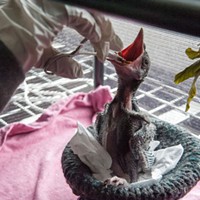
Humboldt Wildlife Center Puts Out 'Code Red' Call for Help
Sep 7, 2023 -
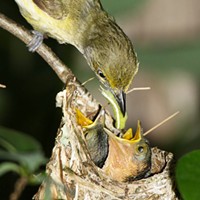
Gardening for Caterpillars?
Dec 15, 2022 -
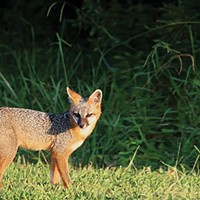
Caution Urged After Second Fox Bite Report
Nov 16, 2022 - More »
more from the author
-
A Chime of Wrens
- Apr 11, 2024
-
Bird Names for Everyone
- Feb 29, 2024
-
Spark Birds
- Jan 11, 2024
- More »
Latest in Get Out
Readers also liked…
-
A Walk Among the Spotted Owls
- Apr 27, 2023
